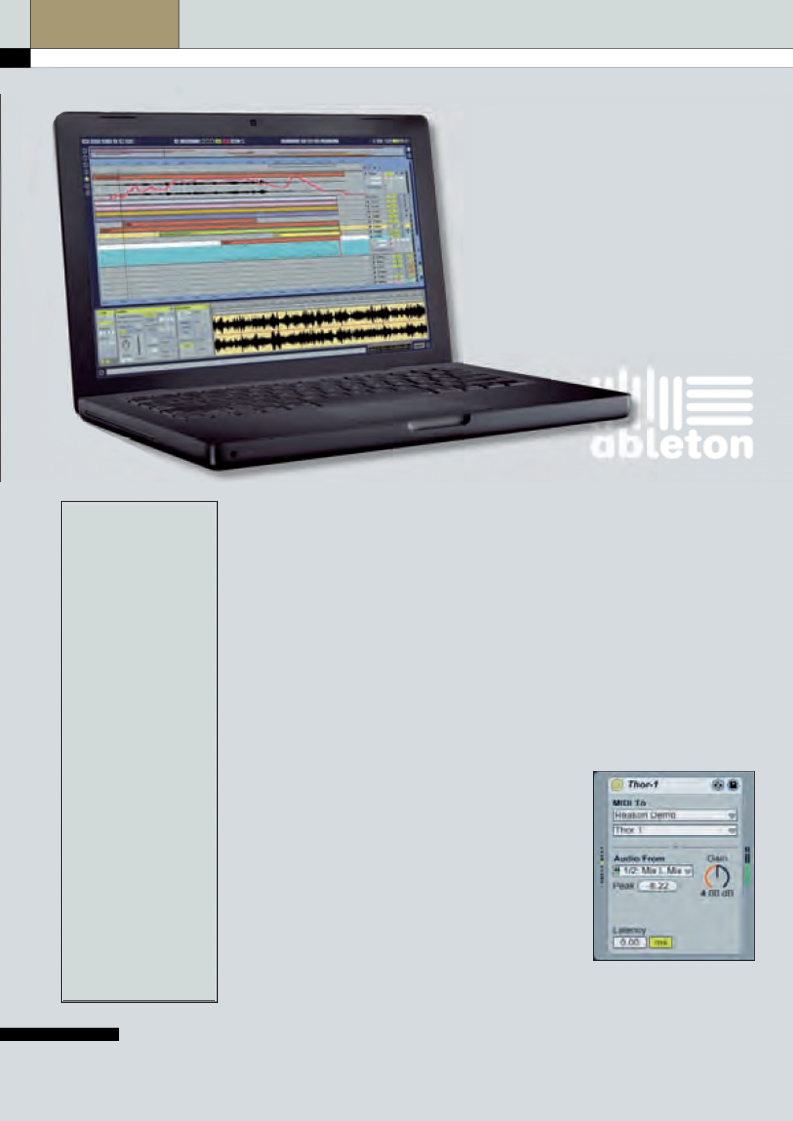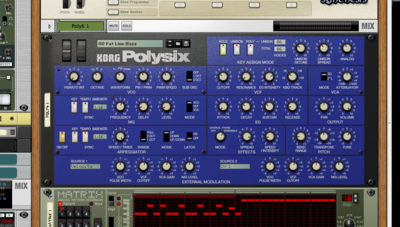Is ReWire 64-bit compatible? This is Remote; Old Reason/Reason Essentials/Record versions. Reason asks me for my DVD! Where can I find the Softube Amps in Reason 8/Reason Essentials 8? Video: Using Reason 8.1 or earlier in 32-bit mode on Windows; Video: Using Reason 8.1 or earlier in 32-bit mode on a Mac. Rewire is a software technology, developed by Propellerhead Software (of Rebirth and Reason fame), which allows two stand-alone audio applications to work closely together. Specifically, a 'Rewire. ReWire is a software protocol, jointly developed by Propellerhead and Steinberg, allowing remote control and data transfer among digital audio editing and related software. Originally appearing in the ReBirth software synthesizer in 1998, the protocol has since evolved into an industry standard.
on Apr 18, 2014 in Presonus Studio One 0 comments
You may be using other audio applications such as Live or Reason. But what if you want to somehow integrate or sync your other audio software with Studio One. This can be done via ReWire. ReWire is a protocol that was developed by Propellerhead to allow you to integrate Reason with your other DAW applications, but the protocol has become such a standard household name that it has been taken up by many other software audio developers so that you can sync more than one audio application to the other. In this article, let's take a look at how to ReWire Studio One to other audio applications. Studio One will be the master ReWire device and I'll be using Ableton Live as my ReWire slave device, but the same steps can be taken if you're going to be using another piece of audio software with Studio One.
Step 1 - How to Set Up the ReWire Applications
The benefits of syncing two audio applications together is that their tempos will be synced, and when you start playback in one audio application it will trigger the playback in the other. First you need to get to grips with the ReWire terminology. One application will be the ReWire host (in this case it'll be Studio One), and the other will run as the ReWire slave (Live). Another important thing is the order preference that the applications are opened. Launch Studio One first as this is the ReWire host. Once Studio One has launched, create a new song.
Launch Studio One first, and create a new song.
On the right on the Browse Panel, open the Instruments tab, and expand the ReWire folder. If the Browse Panel is not open, click on the Browse button in the bottom right, or use the shortcut F5 and it will open up. Under the ReWire folder, it'll show the ReWire-capable applications installed on your system.
The ReWire-capable applications are shown.
Select the application you want to use and then drag it across to the left-hand side panel to add a ReWire track. This will bring up the ReWire dialog box. Now click on Open application to launch the ReWire slave device. Make sure '˜Allow tempo/signatures changes' is ticked so that the projects sync up with the host. If the application doesn't launch, then go to your ReWire slave application and manually launch it.
The ReWire Dialog Box.
When the application opens, you'll see that it'll say it's running in ReWire slave mode.
Ableton Live is running in ReWire Mode.
Step 2 - Check that the Applications are Synced

If you set loop brackets in one application it'll reflect in the other, and if you start playback in, let's say Studio One, Live will start playing as well. Test this out. Change the BPM in one and see how it changes the BPM in the other application. So now you definitely know that they're synced. This means you can run your Live or Reason project side by side with Studio One. If you open the Mixer in Studio One, you'll see a channel strip representing the stereo out of your ReWire slave device. You can add extra processing to this channel strip.
The stereo output of the ReWire slave application appears in the Mixer.
Step 3 - Using Multiple Outs with the Busses
The above example allows you to hear the master output of your ReWire slave device in Studio One. But what if you want to be able to hear each individual ReWire track in Studio One, so that you can mix them differently? That's where Studio One's ReWire busses come in handy.
First you need to configure the ReWire slave device to send its individual tracks to different outputs. I'm working with Live, so I'll demonstrate how this is done, but the same principles apply if you're using another ReWire slave. Instead of sending each track to the master output, send it to another ReWire output. In Live you set the Audio to: ReWire Out and then select a ReWire bus under this box. See how I have chosen different busses for each track.
Changing the ReWire slave outputs in Ableton Live.
Now in Studio One, press F3 to open the Mix console and open the Instr tab on the left. Click on the small arrow in the bottom left of your ReWire device and choose Expand, this will expand to show you the available ReWire busses.
Click on Expand to show the ReWire busses.
What is the latest microsoft office for mac version. Tick the busses that you want to be able to see in Studio One. Now in the Mixer view you have individual channel strips for the different ReWire tracks, so you can change the volume levels, pan settings and add different processing onto each track. Rename these so that they correlate with the tracks in your ReWire slave application.
Rename the ReWire tracks and you can start mixing!
Step 4 - Using ReWire Instruments in Studio One
What if you want to be able to use the instruments in your ReWire slave device in Studio One? Let's take a look at how this is set up. In Studio One, create an Instrument track (Track > Add Track, and under Type select Instrument). Name the track the name of the instrument you're going to be using. Now on Output, select Existing Instrument and on the box under this select the ReWire slave application you're using, and then expand this folder to choose the instrument you want to assign it to.

If you set loop brackets in one application it'll reflect in the other, and if you start playback in, let's say Studio One, Live will start playing as well. Test this out. Change the BPM in one and see how it changes the BPM in the other application. So now you definitely know that they're synced. This means you can run your Live or Reason project side by side with Studio One. If you open the Mixer in Studio One, you'll see a channel strip representing the stereo out of your ReWire slave device. You can add extra processing to this channel strip.
The stereo output of the ReWire slave application appears in the Mixer.
Step 3 - Using Multiple Outs with the Busses
The above example allows you to hear the master output of your ReWire slave device in Studio One. But what if you want to be able to hear each individual ReWire track in Studio One, so that you can mix them differently? That's where Studio One's ReWire busses come in handy.
First you need to configure the ReWire slave device to send its individual tracks to different outputs. I'm working with Live, so I'll demonstrate how this is done, but the same principles apply if you're using another ReWire slave. Instead of sending each track to the master output, send it to another ReWire output. In Live you set the Audio to: ReWire Out and then select a ReWire bus under this box. See how I have chosen different busses for each track.
Changing the ReWire slave outputs in Ableton Live.
Now in Studio One, press F3 to open the Mix console and open the Instr tab on the left. Click on the small arrow in the bottom left of your ReWire device and choose Expand, this will expand to show you the available ReWire busses.
Click on Expand to show the ReWire busses.
What is the latest microsoft office for mac version. Tick the busses that you want to be able to see in Studio One. Now in the Mixer view you have individual channel strips for the different ReWire tracks, so you can change the volume levels, pan settings and add different processing onto each track. Rename these so that they correlate with the tracks in your ReWire slave application.
Rename the ReWire tracks and you can start mixing!
Step 4 - Using ReWire Instruments in Studio One
What if you want to be able to use the instruments in your ReWire slave device in Studio One? Let's take a look at how this is set up. In Studio One, create an Instrument track (Track > Add Track, and under Type select Instrument). Name the track the name of the instrument you're going to be using. Now on Output, select Existing Instrument and on the box under this select the ReWire slave application you're using, and then expand this folder to choose the instrument you want to assign it to.
Choosing a ReWire instrument.
Now play on your MIDI keyboard and you'll hear how you're triggering your ReWire slave instrument through Studio One.
This way you can record your MIDI in Studio One, but it will be using your ReWire slave instruments. If you press record you'll see how the MIDI note data is recorded onto this Studio One instrument track. How neat is that? This allows you to contain your MIDI information in your project so that you can edit and process the instrument within Studio One.
When you're finished with all your ReWire composing, make sure to quit your ReWire slave device first, and then Studio One. If you try quitting Studio One first an error message will come up letting you know that you need to quit the other application first.
Conclusion
That's how to take advantage of Studio One's ReWire capabilities so that you can sync it with other ReWire-enabled audio applications. It works seamlessly and lets you edit and process your ReWire audio and instruments even further if you wish. So if you're using application like Reason or Live, ReWire them to Studio One and take your productions to another level.
For more Studio One tips and techniques check out the following tutorials:
https://www.macprovideo.com/tutorial/songwriters-musicians-toolbox
